Week 1: Introduction to the View of the Middle Way
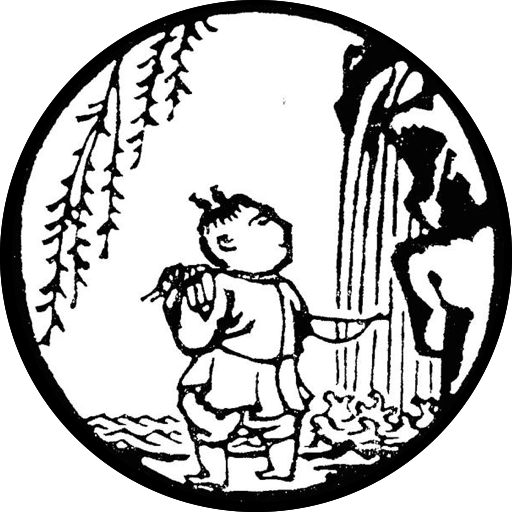
Week 1: Introduction to the View of the Middle Way
7 June 2017 / 60 minutes
Question: What is the view and why is it so important in Buddhism? How might we approach the study of the Middle Way?
Reference: Madhyamakavatara Introduction / no verses
Transcript / Pre-reading / Audio / Video
Madhyamakavatara: Program Outline
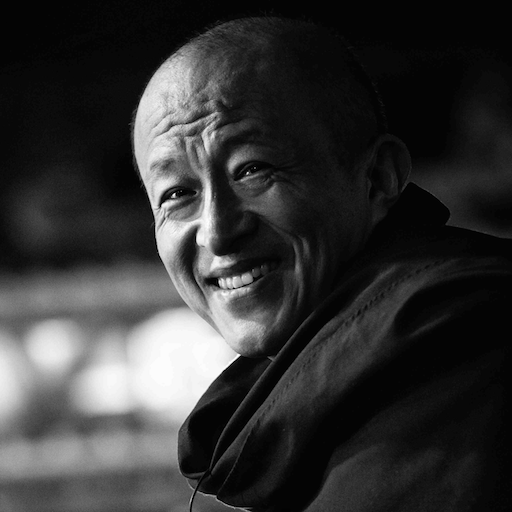
Introduction [Audio/Video timing: t = 0:00:10]
Welcome to “Introduction to the Middle Way,” both for all of you present and a much larger group that’s going to be listening to the recordings. I want to start by thanking you all for joining and remarking that it’s very auspicious that there are so many of us interested in these teachings. Over 1,450 signed up from 54 different nationalities, and I was thinking that it’s a lovely summer’s evening and, as Rinpoche would often say, there are so many other things we could be doing with our time and yet here we are listening to this very dry, academic teaching. And even more so for those of you who are in other parts of the world listening in the early morning or the middle of the night. So I just want to say thank you, and I take it as very auspicious that you are all here.
Just a couple of notes of administration: it is possible to type questions, as some of you are already doing, but as there are so many of you, I’m not sure how many I’m going to be able to answer during the webinar itself. But please feel free to ask them here, or even better on the website for the program. And that’s the second thing. The website, which is madhyamaka.com, will be our primary communication tool for the next eight weeks. So please, I encourage you all, if you haven’t already taken a look, I’ll be putting up recordings, downloads, lots of readings, and there will also be opportunity to ask questions and we’ll have discussion groups. So please use it. And please give me feedback: please let me know what works and what doesn’t work, what else you’d like to see.
I should say the reason I’m here, if I’ve got anything to offer you, it’s because of Dzongsar Khyentse Rinpoche. So I’d like to start by thanking Rinpoche both for making this opportunity available and for having taught me these teachings three times. I’ve received them from him in three four-year cycles in France, San Francisco and Australia, so if I know and am able to pass on anything to you, it’s because of him. So thank you, Rinpoche. And it’s kind of awkward to prostrate to my teacher when I’m plugged into this headset, but if you can visualize me doing it, I shall visualize myself doing it.
I’d also like to offer homage to the teaching itself, the Madhyamakavatara. This is an amazing teaching on the Madhyamaka view, one of the greatest of the Mahayana teachings, and we’ve got very little time frankly to go through what is a very large text. Rinpoche taught it over four years, and he said that even that was very much rushing through it compared to the pace that it was taught in the shedras. At the same time I acknowledge that it’s foundational. It’s really important. And not all of us have the time to take out four years to study this. So I very much wanted to offer something that is condensed and hopefully accessible, and if there’s interest we can also go deeper both in the Q&A on the website and also subsequently with deeper study.
Thank you also to those of you who filled in the survey. Perhaps unsurprisingly, one of the main things that many of you feel is that the Madhyamaka can be very difficult, very academic, very unrelated to everyday life. Which can be troubling for us, as we hear that it’s the foundation of our path and our practice, and yet if it’s something that appears too distant or too difficult, how are we supposed to practice it? So I very much want to offer something that is accessible, is practical, and is relevant. So we will be going through, during the middle weeks of this program, the text, the logic, and the arguments. But the last two weeks will very much focus on practice and on how to apply these teachings in everyday life.
Now it’ll hopefully be accessible and practical, but I’m not sure it’ll be easy though. And it’s not so much that the teachings themselves are difficult. It’s more, as Rinpoche often says, that they go against our habits. We have a deep habit of clinging to the self and to the phenomena around us. So when we study these teachings, which tell us that all these phenomena and the self itself have no substantial reality, it can be difficult to accept.

Rational view [t= 0:05:39]
Rinpoche often tells the story of a child playing on a sandy beach, building a sandcastle. He or she is completely engaged in building this beautiful sandcastle, and then the tide starts coming in. And the child becomes increasingly upset as the waters start to erode and then totally destroy the sandcastle. Now of course if we’re the parent of that child, we might see the whole situation very differently. We might see it as a wonderful day at the beach where we get to build sandcastles with our child, knowing and enjoying the moment, and knowing full well that it’s going to pass, that it is impermanent. But for that child, that’s not his or her experience. Now likewise, Rinpoche says, maybe a little later in our lives, when we’ve become teenagers, we like skateboards. So by that stage, what’s interesting is that we’ve renounced our interest in the sandcastle, and now what matters is the skateboard. And then a little later we become adults, and we talk about our houses, our careers. Later still we become close to retirement, and Rinpoche says then we’re concerned about lace tablecloths and salt shakers – it sounds a little bit like an English country house to me!
The point there is that renunciation is at least in part natural – there’s a certain kind or a certain level of renunciation that happens naturally just as we grow old, just as we go through our lives. And we can look back on our earlier years and we can think of all the things that were our childish attachments and realize how we got caught up at the time, but for us now it doesn’t really have any effect. We can see their insubstantiality. We can see their impermanence. We can see that the sandcastle we’re building doesn’t have a true, substantial self or reality. We don’t get attached to it. And this, I would say, is perhaps a rational way of thinking about the view. We know at some rational level that the self isn’t really there. And in our sober moments we’re able to watch our emotions and manage our reactions, but for most of us from time to time we’ll still get upset. Just as the child gets upset when the sandcastle is lost, if we lose something important to us or break something important to us, we can still become upset. So even though it may be rational, it doesn’t mean that it’s easy to practice.
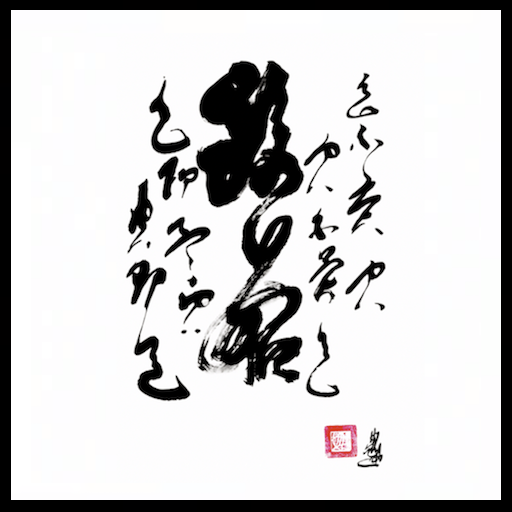
Beyond-rational view [t = 0:08:36]
But what we’re going to look at here is something even more than that: this is the view of nonduality. It goes beyond what’s merely rational to something more paradoxical, perhaps a little stranger. I’d like to give you a couple of quotes to set the tone.
First from the Heart Sutra:
Form is emptiness; emptiness also is form. Emptiness is no other than form; form is no other than emptiness. In the same way, feeling, perception, formation, and consciousness are emptiness. Thus, Shāripūtra, all dharmas are emptiness. There are no characteristics. There is no birth and no cessation. There is no impurity and no purity. There is no decrease and no increase.
When you hear that, you’re probably thinking “That’s a little strange. What does it mean to say there’s no impurity and no purity? No birth, no cessation?” That doesn’t fit with our everyday experiences at all.
Now another example, a story from the Mumonkan (無門関, The Gateless Gate), which is a collection of Zen stories. This one is called Shuzan’s Short Staff:
Shuzan held out his short staff and said: “If you call this a short staff, you oppose its reality. If you do not call it a short staff, you ignore the fact. Now what do you wish to call this?”
The final example is one from the Vajracchedika Sutra (The Diamond Sutra), from section 21:
Subhūti, do not think that the Tathagata holds the thought ‘I have something to teach.’ Do not even think such a thing. Why not? Whoever says that the Tathagata has a Dharma to teach slanders the Buddha, because he does not understand my teaching. Subhūti, in teaching the Dharma there is no Dharma to teach. This is called teaching the Dharma.
So how are we supposed to understand these things? It seems like paradox, nonsense, maybe irrationality. And yet somehow there’s a resonance. We know they’re getting at something important. And yet perhaps it’s easy to assume it’s just poetic or expressive. But I hope by the end of our eight weeks, you’ll be able to understand what’s actually going on in these quotes, and see there’s actually something much more there.
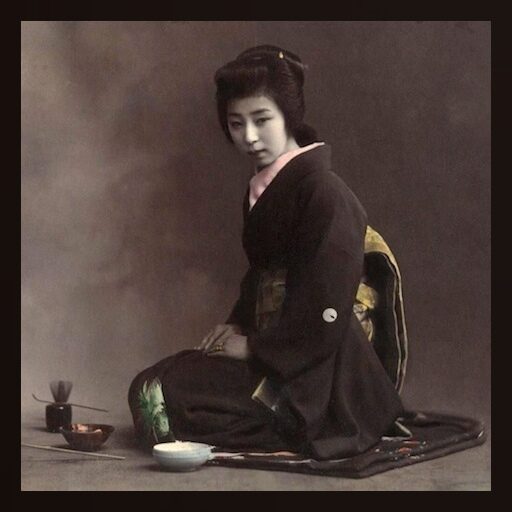
How to study the Madhyamaka [t = 0:11:36]
Here’s another story, also from the Zen tradition. It’s called A Cup of Tea, and many of you may know this one:
Nan-in1, received a university professor who came to inquire about Zen.
Nan-in served tea.
He poured his visitor’s cup full, and then kept on pouring.
The professor watched the overflow until he no longer could restrain himself. “It is overfull. No more will go in!”
“Like this cup,” Nan-in said, “you are full of your own opinions and speculations. How can I show you Zen unless you first empty your cup?”
So this is the famous beginner’s mind. And of course it’s our aspiration when studying Madhyamaka to approach it with that same mind. Now as I mentioned before, this is hard as it’s going to challenge our views. And we’ll realize that although we may not be university professors, our cups are already full especially when it comes to the view of self. So one thing I’d really encourage you over the next few weeks, as you engage in this series of teachings is really to notice when do you find it challenging? When do you find that you disagree strongly? When do you find it provokes you? Or possibly even when do you find that you’re bored or tired, and you simply just can’t engage? Because as Freud said, even boredom can be a sign that you’re getting defensive about something.
More generally, what kind of motivation should we bring as we listen to these teachings? Yes, we should begin ideally with an empty cup. But in the tradition, for example in The Words of My Perfect Teacher, we talk of three different levels of motivation. The lowest is if we engage in the teachings just out of fear of suffering or desire for happiness. The middle level is seeking nirvana for ourselves. And the highest aspiration is seeking perfect enlightenment for all sentient beings. So I’d like to encourage you to listen with that highest motivation if you can, even if it may only be intellectual at this stage. At very least, I’d encourage you to try not to approach these teachings with a narrow academic mindset. As Rinpoche would often say, this is not to write a PhD. This is not to be able to better debate or argue. This is so we can apply the view in our own practice and in our own path. And also as Rinpoche said, we’re going to encounter a lot of different arguments and a lot of different opponents from Buddhist and non-Buddhist philosophical schools, and while these schools were around many hundreds or thousands of years ago and we might think they represent something that’s ancient and even irrelevant to us, as Rinpoche said try instead to engage with them as if what they’re saying is a mindset that you can find alive and well in your own thoughts. Start to notice how sometimes you will adopt views that sound an awful lot like some of our opponents. Because if you can apply it in your own life, to yourself, perhaps there will be something more at stake for you. That will help.
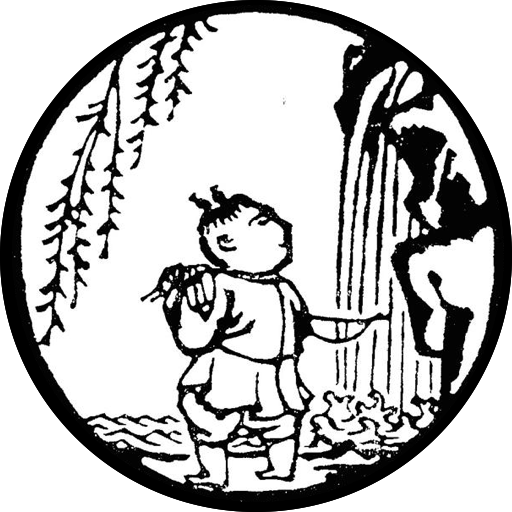
Realizing the view [t = 0:15:42]
One other thing you may have noticed if you have looked at the program outline on the website is that for our eight weeks, I’ve used the images from the Ten Bulls (十牛, Ten Ox-Herding Pictures), originally also from the Zen tradition. And I like them not just for the images and the poems, actually I have a very personal connection with them because before I met Rinpoche, before I even met any living teachers of the Dharma, that was one of the first things that I read as a teenager and so it has a special place in my own heart. I think it planted a seed there that led me to the Dharma. And the tenth ox-herding picture ends very beautifully with the sage in the marketplace, which is very much where we’re going to end – taking our view and looking at how we can apply it in our everyday life, in our work and in our relationships.
But how does the story begin? I’d like to read you the first of the ten poems by Kuòān Shīyuǎn (known as Kakuan in Japanese). This one is called The Search for the Bull:
1. The Search for the Bull
In the pasture of this world, I endlessly push aside the tall grasses in search of the bull.
Following unnamed rivers, lost upon the interpenetrating paths of distant mountains,
My strength failing and my vitality exhausted, I cannot find the bull.
I only hear the locusts chirring through the forest at night.
And if you know this, you’ll know Kuòān Shīyuǎn also writes a commentary on each poem:
Comment: The bull never has been lost. What need is there to search? Only because of separation from my true nature, I fail to find him. In the confusion of the senses I lose even his tracks. Far from home, I see many crossroads, but which way is the right one I know not. Greed and fear, good and bad, entangle me.
That’s probably a very familiar experience for many of us. Such is the struggle of samsara. We’re searching for the truth, our true nature or purpose in life, trying to understand – what is it that drives us to do all that we do and keeps us bound in samsara? And what do we have to realize to find liberation for ourselves and for all others? This whole question of what does it mean and how do we go about finding the truth, this takes us into the whole subject of philosophy.
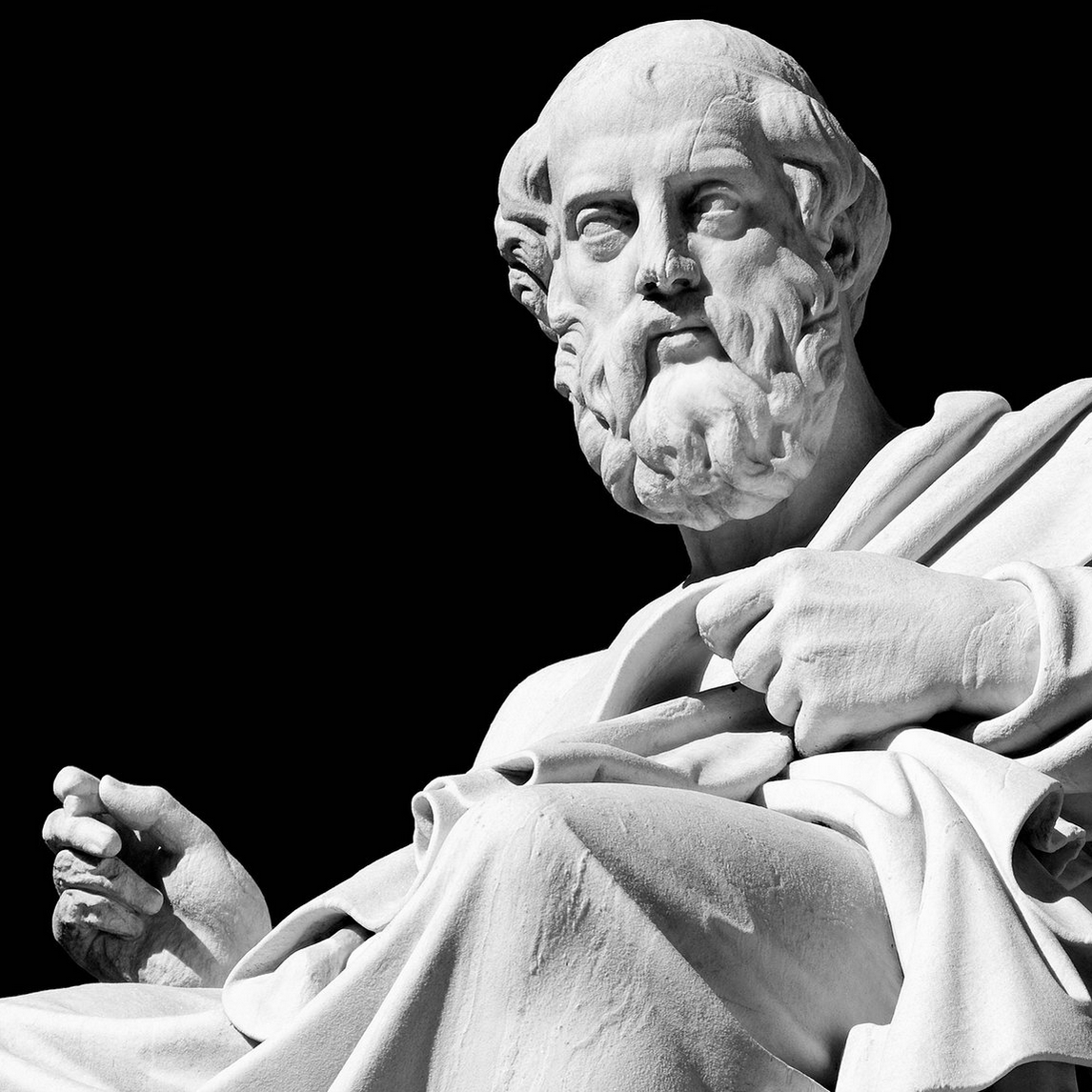
Philosophy [t = 0:18:28]
I’d like to say a few words about philosophy in general before we talk about philosophy in the Buddhist tradition, because a lot of what the Madhyamaka covers is questions of “What is true? What is reality?” And then of course applying that to “How should we live?” Here the understanding is if you’re trying to follow a way of living that’s based on something that’s untrue or unreal, eventually you’re going to get into trouble. For those of you who read the George Orwell pre-reading, he makes that point very beautifully.
In philosophy this notion of what is truth is called epistemology: the study of knowledge, justification, rationality of belief. And the Western and the Buddhist traditions of knowledge are somewhat different. In Indian and Buddhist philosophy the tradition is called pramana, which means valid cognition. We will be touching on it in more depth as we go through some of the debates. And it will help us to understand a little more about some of the great Buddhist epistemologists like Dignaga and Dharmakirti – what did they say and how were they interpreted by subsequent commentators? Some of these interpretations of the basic epistemology actually led to a lot of the differences between the Madhyamaka schools both in India, where the Prasangika and Svatantrika divided, and then subsequently when the Madhyamaka went to Tibet, where the four schools of Tibetan Buddhism took different positions on how to interpret Dharmakirti for example.
So there’s a big historical element which we’ll understand here, and then also later on we’ll come to a conversation about the two truths, and again epistemology will be at the core of that conversation. Generally in Buddhism we accept perception and inference as sources of valid cognition, but we will also be asking when are our perceptions valid? And when are they invalid? When can we trust what we see? When can we trust what we think? A lot of what we’re going to explore when we talk about ‘truth’ and ‘reality’ is related to these questions.
I’d like to say a little about how the Buddhist and Western philosophical traditions actually have a lot in common. If you have a chance, one of the pre-readings I suggested is Bertrand Russell’s A History of Western Philosophy. It’s a wonderful book, and in his introduction he talks about two major different ways of thinking about truth or knowledge, in the Western tradition at least. First we have definite knowledge, which in the Buddhist tradition we call valid cognition, and in the West that’s science. When we have good evidence, we have facts, we can see that something is there because we can test it. And then on the other extreme we have dogma about what’s beyond definite knowledge. Traditionally this has been the domain of religion, which does not function with evidence. And people often ask the question, Is Buddhism a religion? Is it a philosophy? Where does it stand? Some even nowadays would say, Is it a science? For those of you who read the Donald Lopez pre-reading, there’s an interesting question there. How much should Buddhism be thought of in scientific terms?
Bertrand Russell says between science and dogma, there’s actually a grey zone, a big ‘No Man’s Land’ where science cannot offer us answers. And where, in his words, “the confident answers of theologians no longer seem so convincing.” And he lists many classic philosophical questions, one of the ones that’s relevant to us is:
Is there a way of living that is noble and another that is base? Or are all ways of living merely futile? And if there is a way of living that is noble, in what does it consist? How shall we achieve it?
Also for example:
Must the good be eternal in order to deserve to be valued? Or is it worth seeking even if the universe is inexorably moving towards death? Is there such a thing as wisdom, or is what seems such merely the ultimate refinement of folly?
These are classical questions. Another one I love is from Socrates, who asked a question that should be of interest to all aspiring bodhisattvas: “What is the good for the city and the man?”

Philosophy in Buddhism [t = 0:23:29]
As Buddhists we also ask ourselves these questions. We want to do what is good. The eight-fold path is called “Noble”, the path for the Noble Ones. So just as the ancient Greeks, we wish to live on the side of noble rather than ignoble. Likewise, as Mahayana Buddhists our aspiration is that of bodhicitta. We want both relative and ultimate benefit for all beings. But what is good? How do we know? And when we think about the Noble Eightfold Path that we’ve been taught, how do we know that it’s right?
In Buddhism we don’t want to get into general philosophical speculation or metaphysics. And again the Buddha famously had a discussion with Malunkyaputta who asked ten questions on metaphysics, like is the universe (1) eternal or (2) not? Is it (3) finite or (4) infinite? Is the soul (5) the same as the body or (6) separate? Does the Tathagata (7) exist after death (8) or not, or (9) both? Or (10) neither (i.e. does he both not exist and not not-exist?) And here the Buddha told the story of a man wounded by a poisoned arrow, just to say look, I don’t want to speculate. I don’t want take time on questions like this. He said:
Suppose Malunkyaputta a man is wounded by a poisoned arrow, and his friends and relatives bring him to a surgeon. Suppose the man should then say: “I will not let this arrow be taken out until I know who shot me; whether he is a Ksatriya (of the warrior caste) or a Brahmana (of the priestly caste) or a Vaisya (of the trading and agricultural caste) or a Sudra (of the low caste); what his name and family may be; whether he is tall, short, or of medium stature; whether his complexion is black, brown or golden; from which village, town or city he comes. I will not let this arrow be taken out until I know the kind of bow with which I was shot; the kind of bowstring used; the type of arrow; what sort of feather was used on the arrow and with what kind of material the point of the arrow was made.
Malunkyaputta, that man would die without knowing any of these things. Even so, Malunkyaputta, if anyone says “I will not follow the holy life under the Blessed One until he answers these questions such as whether the universe is eternal or not, etc.”, he would die with these questions unanswered by the Tathagata.”
[MN 63]
So it’s really important when we think about philosophy to stay very focussed on what are the kinds of questions that are going to lead us to liberation, rather than just general speculation.
And in Buddhism we know what we’re interested in. We can go back to the Four Noble Truths: suffering, the origin of suffering, cessation, and the path. And in particular the second truth, the origin of suffering. We know the origin of suffering is craving, but what is that craving based upon? We know it’s based on self, on self-clinging, but do we really understand that? That’s going to be the core of our investigation. And what we’re going to arrive at is the conclusion that self-clinging is based on a false view of self. It’s not about denying self. It’s not about having a real self that we somehow have to punish like the ancient Hindu ascetics, but rather that it’s just a mistake.
One other thing I’d like to say is that when Rinpoche talked about why should we study Madhyamaka, he said it’s really important also to have guardrails for our practice. A couple of reasons.
Firstly, it’s great to have devotion, to have inspiration, and we should always aim to be inspired by our practice. But as Rinpoche says, emotions are fickle. We may feel great one day, but then maybe after a few weeks we don’t feel like practicing any more. We lose our inspiration. So at times like that we need something to allow us to stay the course. We need some guardrails. We need the view.
And also as Rinpoche said, the early stages of the introduction of Dharma into the modern world, into the West, they’re now over. The Dharma is in a very different and very complex environment. There are many different schools all being taught simultaneously in the West. And at the same time, the Dharma is encountering Western psychology, and self-help, and all kinds of New Age theories. And even in the West now, people are reinterpreting the Dharma and asking what is secular Buddhism? Do we need to update Buddhism for the modern world? As Rinpoche says, it’s very difficult to know what should we trust. How will we know what is an authentic path? For all of this we need the view.

View [t = 0:28:18]
Now let’s talk a little about the view. I wanted in this first session to talk about what is the view and why is it so important. What is a view, first of all? A view is basically a way of seeing the world, a story, a mindset, a set of assumptions, a perspective perhaps. Maybe a theory, maybe a story we tell. There are a couple of classic examples. The snake versus the rope. We might see a striped rope lying on the floor, but we might not know it. Maybe the room is dark. Maybe it’s dim. Maybe we’re a little afraid. And we might misinterpret it. Our view might be that this thing which is in reality a rope, we misinterpret as being a snake. And so because of our mistaken view, we react. We become emotional, perhaps we run out of the room screaming. And then only later when we turn on the light do we see that actually we were mistaken. That’s an example. A view then, in this case the view that the snake is there when in fact it’s actually a rope, leads to our behaviour. So our view, our mindsets, lead to our behaviour.
Another example that Rinpoche often uses is people who wonder what does it mean to look beautiful. So maybe they read a magazine on beauty. Maybe they read Vogue, and they spend time studying and contemplating all the articles, all the images, until they have some kind of view now established in their mind about what does it mean to be beautiful. And then they engage in all the actions which would make them look like their vision of what is beauty. Again, the way it works – the way everything works – is that we start with a view, whether or not we know we have one. We have views, and our actions come from our views. Even in Western psychology this idea is very familiar, and most of the cognitive approach in psychology is based on this. Even Freud talked about the iceberg. He’d say you can think of a person like an iceberg where you see a little bit on the surface, which is the parts we actually see – our behaviours – but there’s an awful lot going on inside, both that we’re conscious of and that we’re unconscious of. The dictionary definition of view is:
View: A particular way of considering or regarding something; an attitude or opinion (“strong political views”).
Synonyms: opinion, point of view, viewpoint, belief, judgment, thinking, notion, idea, conviction, persuasion, attitude, feeling, sentiment, concept, hypothesis, theory.
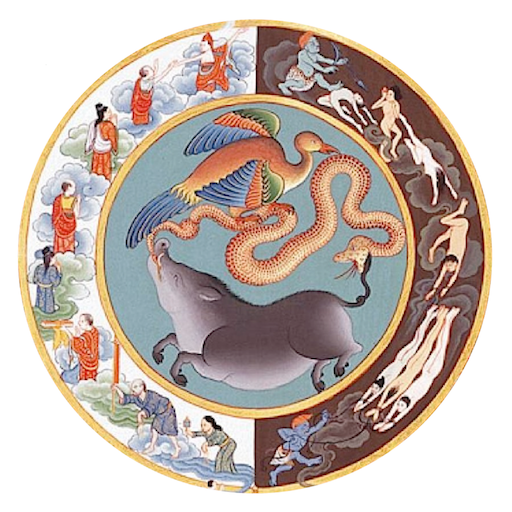
View in Buddhism [t = 0:31:14]
There are many views we have in the relative world, like the examples of the snake and the rope, and perhaps the example of beauty. But as Buddhists the view we’re really concerned about is the view of self because as we said a moment ago, that is the root of samsara. Because we have a view that our self is real, it’s somehow ‘true’, it’s somehow the most important point of reference in our lives, we then construct the notions of ‘me’, ‘mine’, subjectivity and objectivity. And we then get caught up in the twelve links of interdependent origination, in hope and fear, and then we suffer. So the view, in this case the view of ignorance – thinking that there is a self – it drives everything else and gives rise to our actions. And ultimately, according to the tradition, it also then drives our rebirth in samsara. So this is what we have to uproot.
At a more relative level, Rinpoche often uses the example of How do we know if we’re actually making progress in our realization of the view? He talks about the Eight Worldly Dharmas (the Eight Samsaric Dharmas), and these are:
• hope for happiness / fear of suffering,
• hope for fame / fear of insignificance,
• hope for praise / fear of blame,
• hope for gain / fear of loss.
Basically, this is attachment and aversion. For most of us, right now those extremes feel very far apart from one another. We really run towards happiness and away from suffering, we really hope for gain and run from loss. And to the extent that we can start to “equalize” those, as Rinpoche says, that is a sign that our view is becoming more embodied, more internalized.
That is the most foundational view, which we would find in all the Buddhist schools including the Shravakayana and the Theravada, but in the Madhyamaka we go beyond just the view of the self of the person, but also any other views, any views we have about phenomena. Again, back to views about what does beauty mean? What does success mean? What does it mean to do many of the things we do in life? We have lots of views around that. And we want to understand, we want to show – we will show – that all of these views of phenomena are likewise without essence, without a foundation. Now that’s not to say they’re not very real for us. That’s not to say they don’t drive us, but just to say they’re not substantial.

The origin of our views [t = 0:34:23]
And if you ask yourself where do I learn these things, where did I learn my idea of beauty? Where did I learn my idea of what it is to be successful in life? Where did I learn what it is to be a good friend, or a good parent, or a good son? For many of us, these views come from places we’ve never thought about really, from our family, from our childhood, from our education, from our society, from our friends on Facebook perhaps. We don’t necessarily analyze them. We don’t necessarily even know we have these views, but nevertheless they’re affecting us.
To offer another quote from Bertrand Russell, he said:
Ever since men became capable of free speculation, their actions, in innumerable important respects, have depended upon their theories as to the world and human life, as to what is good and what is evil. This is as true in the present day as at any former time. To understand an age or a nation, we must understand its philosophy, and to understand its philosophy we must ourselves be in some degree philosophers. There is here a reciprocal causation: the circumstances of men’s lives do much to determine their philosophy, but, conversely, their philosophy does much to determine their circumstances.
A lot of what we’re going to be examining is understanding where our views come from, and learning to hold our views more lightly. Learning to see they’re not as solid as we thought. Back to the child with the sandcastle, maybe the child holds onto the sandcastle with a very solid view about what he or she wants to build and how it must look, but by the time we’re adults, we’ve learned to let go of that a little.
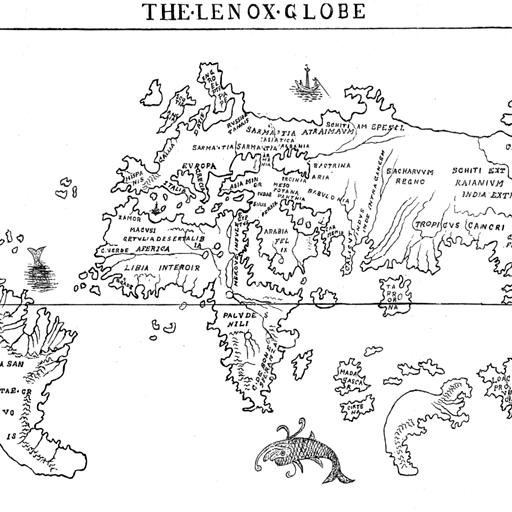
Distorted views and inaccurate maps [t = 0:36:32]
And also it will help us to understand a little bit about where our views are distorted. Where are our views in error? Where are our maps of the world not complete? I like looking at medieval maps from the early days of exploration in the 15th and 16th centuries, and you’ll often see a map where in a corner the mapmaker, the explorer, isn’t quite sure what’s going on there and has written “Here be dragons”. Actually in ancient Rome they had the same thing with the Roman mapmakers, except there they wrote “Here be lions”. I love the idea that when we’re confronting something that we’re not sure about, when we don’t really understand what’s going on, we’ll often be afraid. We’ll often just panic. Much of what we’re going to study over the coming weeks isn’t simply about establishing the right view, but also about understanding all the ways in which our views are distorted, incomplete, and just plain wrong. Indeed, the way Chandrakirti sets out his Madhyamakavatara (Introduction to the Middle Way) is to go through all the ways in which our views can be mistaken, and then by a process of elimination we end up with the right view – the view of the Middle Way.

View and practice [t = 0:37:36]
So we now come to the relationship of view and practice. Rinpoche often talks about view, meditation and action or conduct, and how these three are all related. And yes, as we’ve seen, our view does determine our action. Although as Rinpoche says, for some of us it also works the other way round. As we engage in practice, we may not necessarily start with the view, but through our practice we’ll start to have insights about the nature of phenomena and the nature of our selves, and then our practice can lead us to our view. You may know that in Tibetan Buddhism, the word for practice or meditation is gom (Wyl: sgom / སྒོམ), which means something like ‘familiarization’. So what does that actually mean? How can we understand that?
For this I’d like to introduce a distinction by a Harvard professor, Chris Argyris, who used to teach at Harvard Business School. He differentiates between what we believe – what he calls our ‘Espoused Theory’ – and what is actually driving our actions, which he calls our ‘Theory-in-Use’. Let’s take an example. We might for example say, “I know smoking is bad. I think people shouldn’t smoke. I think I shouldn’t smoke.” So that might be my Espoused Theory, but nevertheless I might still smoke. So my actual behaviours are inconsistent with my Espoused Theory. My Theory-in-Use and my Espoused Theory don’t match. So there are two different views we are talking about here. There’s a view that we’re aspiring to get towards, to realize, and then there’s a view that is currently driving what we do.
And the same is true in Buddhism. The path, practice, is all about closing that gap between the view we’re going to establish and our current view that’s driving our current actions. In the tradition we talk first about ‘establishing the view’, which in Argyris’ language is coming up with an Espoused Theory. In this case, the view is nonduality – the emptiness of the self of the person and the self of phenomena. But for most of us, even after we’ve spent eight weeks establishing the view and convincing ourselves that it is true, that it is right, that what our masters have told us makes sense, we then still have to practice. We have to work with that view until it is embodied, until it is the theory that is actually driving our day-to-day behaviours.

Deliberate practice [t = 0:40:49]
In modern western psychology, we’ve discovered the notion of ’10,000 hours’ of practice. That’s what it takes to achieve mastery, to really internalize and achieve mastery over a view and a body of practice. The important distinction here is that if, for example, you want to become a good tennis player, or a good chess player, or a good musician, if you look at the elites in all of these different endeavours they all spent a lot of time practicing. But the essential thing is that their practice is ‘deliberate practice’, which is a term that was introduced by the psychologist Anders Ericsson. Here ‘deliberate’ means we’re not just messing around in a tennis court knocking a ball back and forth. We’re actually being very thoughtful about working on our backhand, or working on our forehand, practicing the correct technique. We’re practicing the correct view of how we wish to serve or hit the ball. Because it’s not practice that makes perfect, it’s perfect practice that makes perfect.
When it comes to our Buddhist practice, the same is true. It’s important for us to try, if we can, to base our practice on the view, because if we’re practicing without the view then it’s like a tennis player who is just knocking the ball around the court. And it’ll be difficult to actually master our game. I’d encourage all us to consider that this might be a topic we wish to contemplate. As you think about your current practice, as you think about your actions and behaviours in the world, and then you ask yourself – What drives what I do? What drives the way I think about my practice? How am I approaching it? What is my view in reality? What is my Theory-in-Use, and how different is that from the view of emptiness? And with every practice, whether it’s taking refuge, practicing bodhicitta, ngöndro, mindfulness, or Vajrayana practices – all of these, in some way, we need to base on the view of emptiness.

Enlightenment is realization of the view [t = 0:42:56]
So that’s an overview of view in general. Why is the view important? Because our view drives our action, and ultimately we’re not going to change our actions unless we change our view. The view drives everything. As Rinpoche says, it’s the foundation. In other words, he’ll say another way of talking about attaining enlightenment is realizing the view. To put it differently, it’s when there is no longer any gap between our Espoused Theory and our Theory-in-Use – our view is now completely realized. It’s completely internalized. That is, in practical terms, another way of talking about what is enlightenment. So this view that we’re going to talk about for the next eight weeks, it’s very relevant – directly relevant – to enlightenment itself.
And the good news is it’s not as though we have to be like a surgeon learning all the details of anatomy, or a lawyer learning all the details of the law. There really is only one thing we need to understand, which is this view of emptiness or nonduality, the view of the Middle Way. But of course although it sounds very simple, it’s actually the hardest thing, because it goes so much against our habits and against society’s habits.
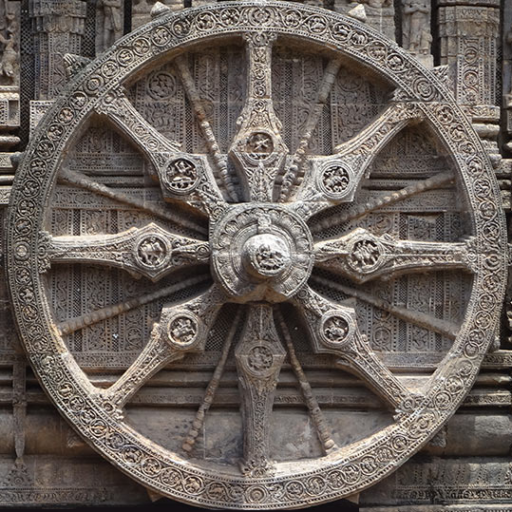
The view in the Buddha’s teachings [t = 0:44:55]
If you’ve read Rinpoche’s first book, What Makes You Not A Buddhist, you will know he sets out the view there in the context of the Four Seals, which is the Mahayana version of the Three Marks of Existence: dukkha (unsatisfactoriness), anicca(impermanence) and anatta (non-self). And the fourth seal adds that nirvana is beyond duality or dualistic extremes. These three or four seals set out the simplest expression of the view, and in particular we’re going to be focussing on the seal or mark of non-self, which is foundational to all Buddhist schools. In these eight weeks we’re going to explore what does non-self mean? How might we understand it and apply it in our practice and in our everyday life?
In terms of how this fits into the Buddha’s cycles of teachings, you may be familiar with the idea that the Buddha taught Three Turnings of the Wheel of Dharma:
- (1) The First Turning was at Deer Park, to an audience of shravakas, and he taught the Four Noble Truths and the rest of the Tripitaka.
- (2) The Second Turning was at Vulture Peak Mountain, to a mixed audience of bodhisattvas and arhats, and that’s where he taught emptiness. So the Madhyamaka is a Second Turning teaching, which also includes Prajñaparamita, the Heart Sutra, and all the work of Nagarjuna and the rest of the Madhyamaka tradition.
- (3) The Third Turning was taught at Shravasti and other places, to an audience of bodhisattvas, where he gave the teachings on Buddhanature now associated with the tradition of Maitreya.

Emptiness and Buddhanature [t = 0:46:40]
Another question we’re also going to come across in the weeks ahead is how to understand which of these Turnings is the definitive teaching of the Buddha, and which is just provisional. For example, as Rinpoche says, in some of his teachings the Buddha says things like “In one of my past lives, when I was an animal …”, and he’ll use that to tell a story, indicating that there really was a true self in his past life. And that would be considered a provisional teaching, because in the Second Turning we learn that the self does not truly exist. Now the debate comes between the Second and the Third Turnings in terms of how to understand the relationship between emptiness and Buddhanature. As we saw at the beginning with the quote from the Vajracchedika Sutra (Diamond Sutra), even there the Buddha says, “There is no Buddha.” So how are we to understand all these teachings?
And this question about emptiness and Buddhanature is very important because as Rinpoche has often said, if we misunderstand the Buddhanature teachings, it’s very easy for us to slip into a view that is much like the Hindu view of some kind of universal self or universal cosmic spirit or soul or consciousness, which is very much like Atman. And that’s actually one of our opponents, which we shall seek to defeat. So we’ll see a little bit about how the different schools understand these Three Turnings in different ways, and explore what we can learn from that.
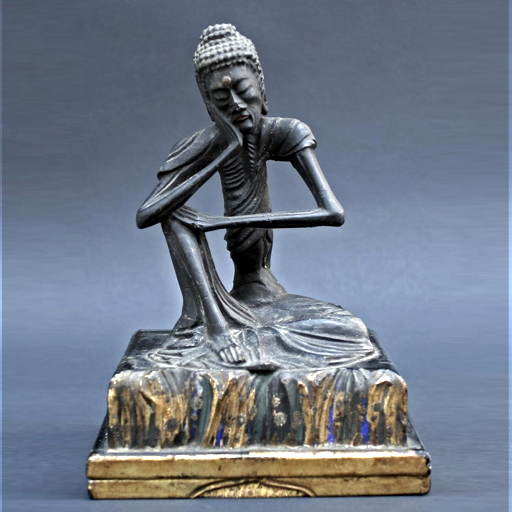
Why is it called the Middle Way? [t = 0:48:31]
Some of you may be wondering why it is called the Middle Way. There are two ways of thinking about this. The original understanding coming from the Shravakayana is that the Buddha was teaching a Middle Way between the extremes of indulgence and getting caught up in worldly pleasures, and then asceticism or self-mortification. As you may know from his life story, before he reached enlightenment, the first teachers that he followed (including Alara Kalama and Uddaka Ramaputta), were very ascetic teachers in the old Indian tradition. Their practices included a great deal of starvation and long meditation retreats that aimed almost to ‘defeat’ the self by trying to starve it, a little bit like some of the views of medieval Christianity. And he realised that this approach was not going to bring him to enlightenment. It was not the path.
And we still hold to that view, but in the Madhyamaka the Middle Way view is also understood to mean avoiding extreme views. So what’s an extreme view? It’s eternalism or nihilism. We’ll learn a lot about what these terms mean – eternalism is basically saying that something does exist, for example the self exists, phenomena exist, the sandcastle truly exists – and nihilism is all about nothing exists, nothing matters, who cares? As Rinpoche says, that’s the view that is sometimes misunderstood as what the French existentialists were saying.
It’s important to understand that when we say ‘middle’, middle is not some kind of average between good and bad. It’s actually completely transcending these extremes. So when we talk about the Middle Way, it’s not that some days we do good, some days we do bad, and we sort of average out our lives. It’s learning how do we go beyond all ideas of ‘good’ and ‘bad’ in the first place. What does that mean? How might that look?
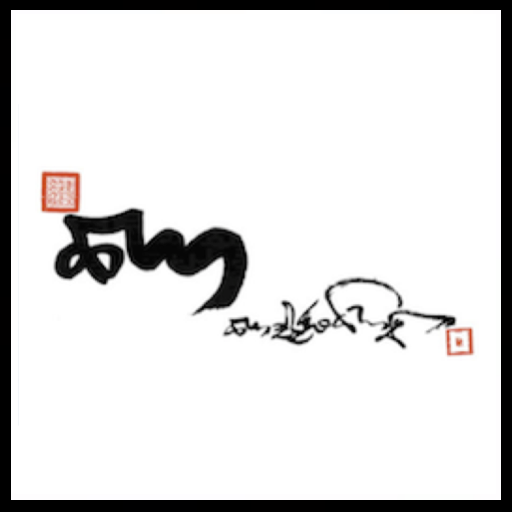
Taking accountability for one’s view and practice [t = 0:50:47]
I also want to talk a little about the importance of establishing the view for ourselves. A lot of the teachings in the Pali suttas set out the idea of taking responsibility and personal accountability for one’s path. The Buddha said:
One is one’s own refuge, who else could be the refuge?
[Dhp, XII 4]
You should do your work, for the Tathagatas only teach the way.
[Dhp, XX 4]
So this is very much saying that nobody else can liberate us. We have to liberate ourselves. But in so doing, we also need to develop awareness and understanding about the view that we’re relying upon. We need to take personal accountability for our view just as much as for our actions. There’s another famous sutta, the Kalama Sutta, where people from the Kalamas clan asked the Buddha, “How should we rely on your teachings?” He replied:
Do not be led by reports or tradition or hearsay. Be not led by the authority of religious texts, nor by mere logic or inference, nor by considering appearances, nor by the delight in speculative opinions, nor by seeming possibilities nor by the idea ‘This is our teacher’. But O Kalamas, when you know for yourselves that certain things are unwholesome and wrong and bad, then give them up, and when you know for yourselves that certain things are wholesome and good, then accept them and follow them.
[AN 3.65]
The idea here is very much that we’re not approaching the Madhyamaka as just some kind of instruction, some kind of holy text that we’re meant to follow as a set of commandments. These teachings are very much something that we’re meant to test and then internalize, continuing in our practice until we realize their essence. Here’s another famous saying from the Buddha:
Do not accept any of my words on faith,
Believing them just because I said them.
Be like an analyst buying gold, who cuts, burns,
And critically examines his product for authenticity.
Only accept what passes the test
By proving useful and beneficial in your life.
And there’s another teaching called the Four Reliances that builds on this:
Rely on the teaching, not on the person;
Rely on the meaning, not on the words;
Rely on the definitive meaning, not on the provisional;
Rely on your wisdom mind, not on your ordinary mind.
This is another way of saying we really should aspire and work hard to understand and internalize the view for ourselves. Because when we go through to day to day of our lives, or when we’re sitting down and doing our practice, we can’t keep asking our teaching or reading books to find answers. We need to know then and there, in the moment, what are we going to do? And for us to know that, we need to have internalized our view. We need to carry it with us all the time. It needs to be ours. Not someone else’s view. Not something we’ve heard. Not just something we’ve read, or that we’ve been taught. But a view that we’ve internalized. So I really want to encourage you to approach this study and these teachings in that way.

Not getting attached to the view [t = 0:54:22]
But at the same time, Buddha also said we can’t hang on to these teachings. Yes we have to internalize them, but they themselves are something we will let go of. He talked about this:
O bhikkhus, even this view, which is so pure and so clear, if you cling to it, if you fondle it, if you treasure it, if you are attached to it, then you do not understand that the teaching is similar to a raft, which is for crossing over, and not for getting hold of.
[MN 22.13]
It’s the same here with the Madhyamaka teachings. We want to approach these teachings as a way to get us to the other side, not so that we can construct some complex philosophy of our own. And indeed, as we go through these teachings, we’ll realize that a lot of what the text is telling us is that establishing the view is not so much about constructing something new, but about deconstructing our confusion and our wrong views.
And this applies even to rationality itself. Rinpoche often talks about the journey from irrational to rational to beyond-rational. Yes, we know we don’t want to rely on irrational beliefs, confusion and wrong views. And so, yes, we will use the rationality of this study of Madhyamaka, this logic, and this analysis to refute and defeat all our confused and wrong views. But that approach in itself – logic and rationality – is just another raft to cross the river. Because where we’re going, as you saw in some of those initial quotes about nonduality from the Heart Sutra and the Vajracchedika Sutra, is beyond rationality. It is beyond thinking. It is beyond speech and conversation and language.
And yet at the same time, we’re not going to fall backwards into irrationality. Instead, in the same way we will learn to go beyond all other dualistic extremes, we shall transcend both irrationality and rationality to arrive at the heart of understanding. So this journey will be a little paradoxical at times, because we’re going to be spending a lot of time building up our logic and reasoning and refutation, and then at the very end our irrationality and rationality will both dissolve.
The moment two bubbles are united, they both vanish. A lotus blooms.
—Kijo Murakami (1865–1938)
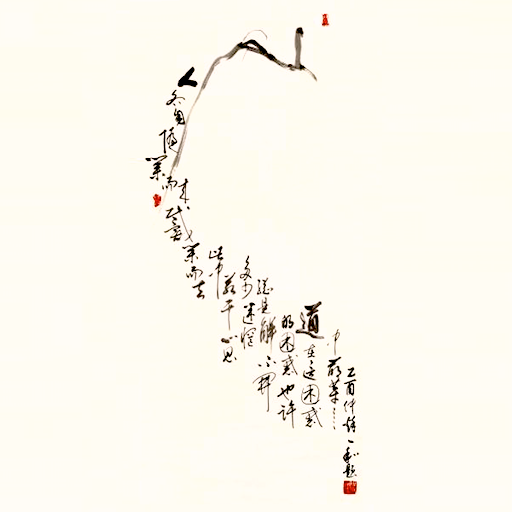
Practice is 98% of the journey [t = 0:56:32]
Rinpoche also puts it differently. He says yes, the view is essential – establishing it and studying it. We need it. It is the foundation. But then he says don’t kid yourselves – you’re not going to get anywhere just by establishing the view. Most of what you need is practice. 98% of our journey is practice. But as we’ve said before, the practice itself needs to be based on the right view, because otherwise your path won’t be leading you in a good direction.
My aspiration for all of you is that we can learn to internalize the Dharma. To go from having an external authority – having all these teachings living outside us – to go instead to having an inner authority, an inner Madhyamaka, an inner nonduality that we can refer to and that we can carry with us all the time. Rinpoche often jokes and says, wouldn’t it be wonderful if we had some simple rules in Buddhism, like some other religions. For example to pray five times a day at certain times, or only to wear socks, or never to eat roast potatoes. Or something like that. And yes of course, we can have rules like that and those rules are indeed easy to follow, but hopefully you can see that a rule-based approach is very different from what we’re doing here. Because our view is much more expansive than that. We don’t just want a set of rules. We want a foundational understanding of self, or more to the point the lack of ultimate existence of self, which is then going to guide all of our actions.
So that is really my aspiration for you for the next eight weeks: to understand the view, to understand how to apply it in your practice – not to give you any new practices, but to give you a new perspective perhaps onto your existing practices. And then to have a sense for what the view means for how to live in the world – post-meditation, work, family, relationships. And at an emotional level, how can we make the view our friend? How can we become really confident in the view and use it as a companion, a guide, a support – something we can really put our trust in? So really befriending the view. That’s another aspect of how I’d like to approach this.
And indeed I would say that a lot of the challenge of how Buddhism may be misunderstood in the West is because people haven’t made friends with the view. They see it as scary. They see dragons. And as a result, we hear a lot of teachings that are about walking softly and speaking gently and being mindful – that are not really based on the view.
So thank you. This will appear on the website, and I’d encourage you to go there for announcements and everything else, and next week we’ll be going through the first five chapters of Chandrakirti’s Madhyamakavatara (Introduction to the Middle Way). I encourage you to read ahead if you have the opportunity, and I’ll see you again next week.
[END OF WEEK 1]